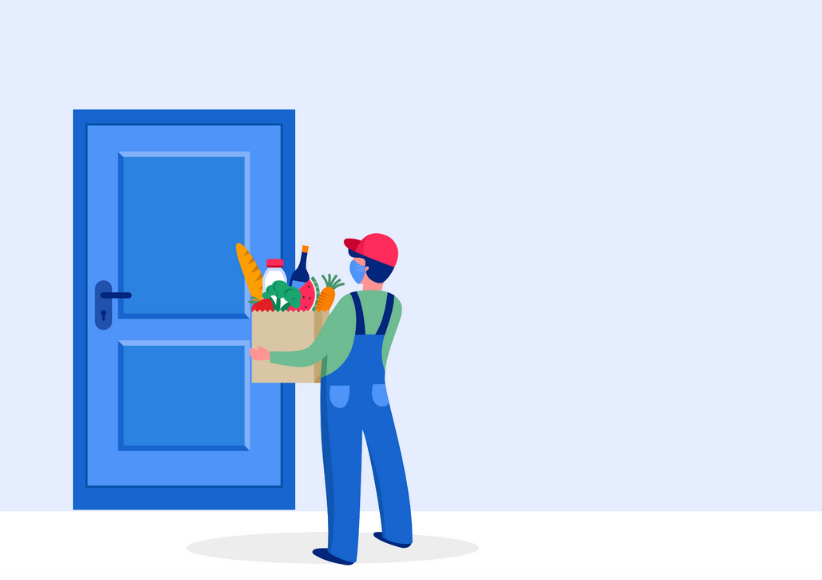Transformation
Apr 09, 2020
Restaurants in the Age of COVID-19: How to Accelerate Curbside & Delivery

COVID-19 has changed how Americans are shopping and dining. As of April 2020, half of the U.S. population has been asked to self-quarantine to combat the spread of COVID-19. This social distancing has produced a new surge in curbside and delivery services with pressure on grocers, big box, and online retail to comply with municipal orders. As Americans cannot dine out, many restaurants are moving onto services like Uber Eats, Doordash, Grubhub, and Postmates or providing delivery or pickup with their remaining employees.
There has been steady growth in food to-go for years, but the global pandemic has accelerated the need for these services. Restaurants that are able to capitalize on food to go now, pivot and adapt the quickest, focus their decisions, and invest in the technology to streamline operations may be better positioned in the future.
Focus on Your Customer’s New Needs
Before COVID-19, your restaurant may have been focused on building a mobile app, a new loyalty program, or replatforming your technology.
Given social distancing restrictions, you might want to reprioritize your feature roadmap to include:
Pay online or contact-less payments
Expedited pickup
Low-cost delivery
Meaningful communication and connections
We recommend pivoting resources toward rolling out these features in an agile fashion, focusing on quick wins and projects that can be completed with speed.
Catch up to the Competition
If you haven’t yet implemented delivery or curbside offerings, here are some ideas that may accelerate your adoption:
1. Simplify Your Menu
Simplifying your menu will allow a smaller staff to accomplish more, reduce supply costs, and focus on the food that can travel best. Plus, a simpler menu with fewer options will allow you to onboard with delivery partners’ menu systems quicker.
2. Evaluate Pickup and Delivery Options
Curbside pickup can be implemented with existing phone or online ordering systems, with many locations posting signage that instructs their customers on arrival. Incorporating contactless payments like Apple Pay or Google Pay in-store or take payments (and tips) online with existing payment systems can help reduce touchpoints and protect both customers and employees.
Delivery partners like DoorDash and Uber Eats can provide an immediate delivery infrastructure for your restaurant at a commission cost. Some independent restaurants have started using their own employees for delivery, but this will be costly and difficult to roll-out for nationwide chains.
Ask delivery partners about delivery fee reductions. Uber Eats is providing free delivery for independent restaurants during the pandemic. DoorDash merchants can enroll in First Order, $0 Delivery Fee promotions. Postmates is waiving commission fees in select markets. Additional financial assistance may be available from your providers upon inquiry.
3. Build Your Foundation
Estimates on how long COVID-19 quarantines may last range from weeks to months. You may need to accelerate adopting new technology or computing power to meet a prolonged, surging customer demand for online ordering.
Consider renting new equipment to meet spikes in your digital demand. As your online and delivery ordering stabilizes, you can develop a long-term strategy that will handle potential spikes and reductions of demand over the coming months. Migrating to cloud technologies can help your dine-out infrastructure scale up when needed and reduce costs when customers move back into the dining room.
4. Streamline Your Experience
Once you have a curbside and delivery operation in place, it’s time to engage your customers to inform them of these options. Good strategies include:
Creating targeted push notifications that inform your customers of recent changes.
Updating your app and home screen to focus on curbside and delivery first.
Turning to social media and marketing campaigns that highlight your new and safe experiences.
Ahead of the Curve?
If you already have a solid technology foundation, then great! Restaurants that had an existing curbside or delivery presence, like McDonald’s, Red Lobster, and Chili’s, have accelerated their marketing and directed their customers to these options.
Loyalty programs can help surprise and delight engagements for to-go orders. Coupons and discounts on delivery are used to enforce new customer behavior but drive margins down. Think about excluding low-margin items from free delivery options or define an order minimum to cover delivery fee discounts.
Distinguishing your brand in a sea of delivery options will also be challenging. Chili’s is offering beer, wine, and margaritas to go when in compliance with new state laws. Chuck E. Cheese is finding ways for customers to bring parties home with takeout or delivery family and birthday packs, creating familiarities with their most loyal base: kids. Following their leads may provide your customers comfort with rewarding, memorable experiences.
We’re Here to Help
We hope some of these suggestions will help those struggling to navigate these turbulent times. If there is anything we can do to help, please reach out at marketing@credera.com.
Contact Us
Let's talk!
We're ready to help turn your biggest challenges into your biggest advantages.
Searching for a new career?
View job openings
